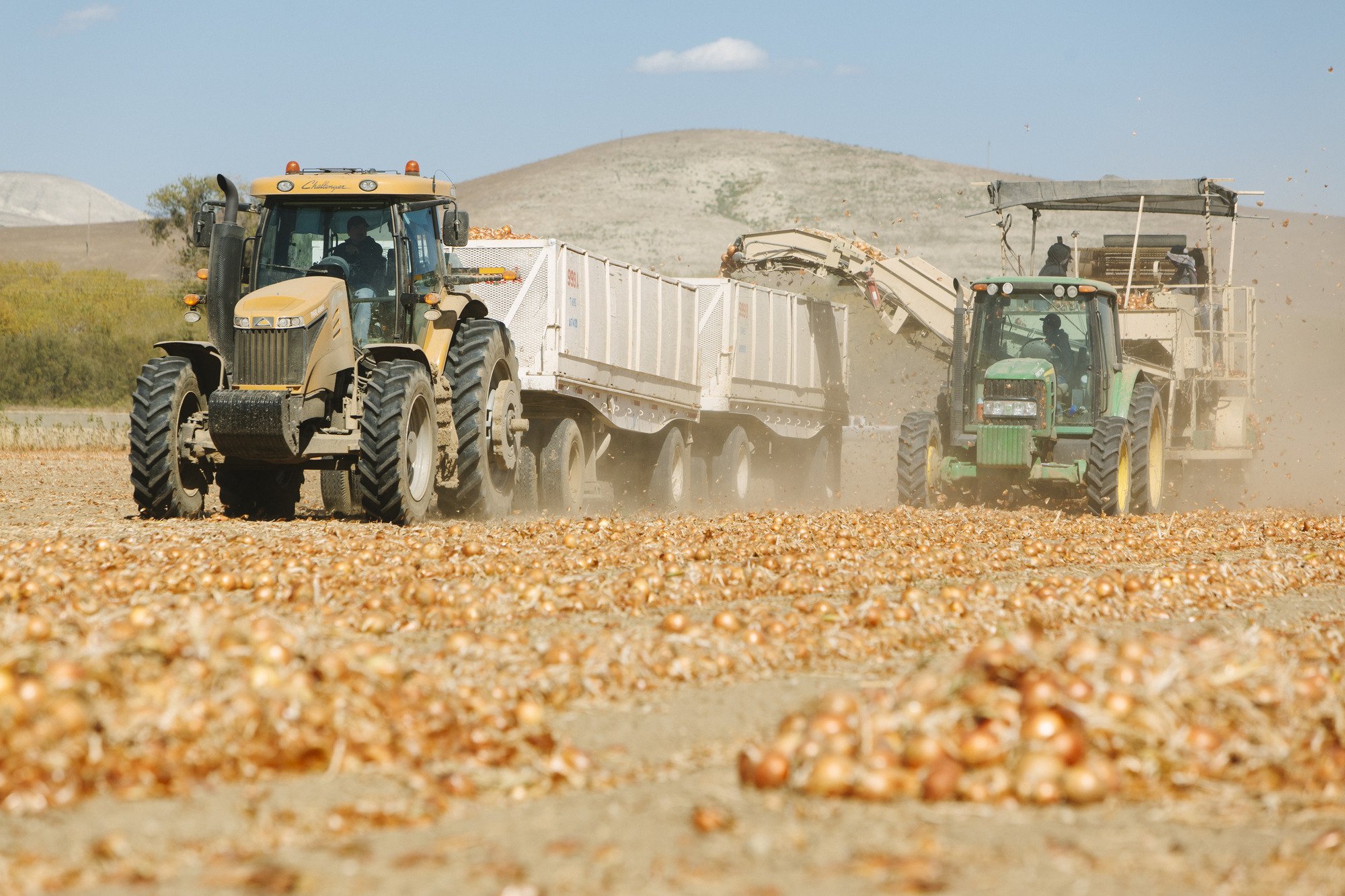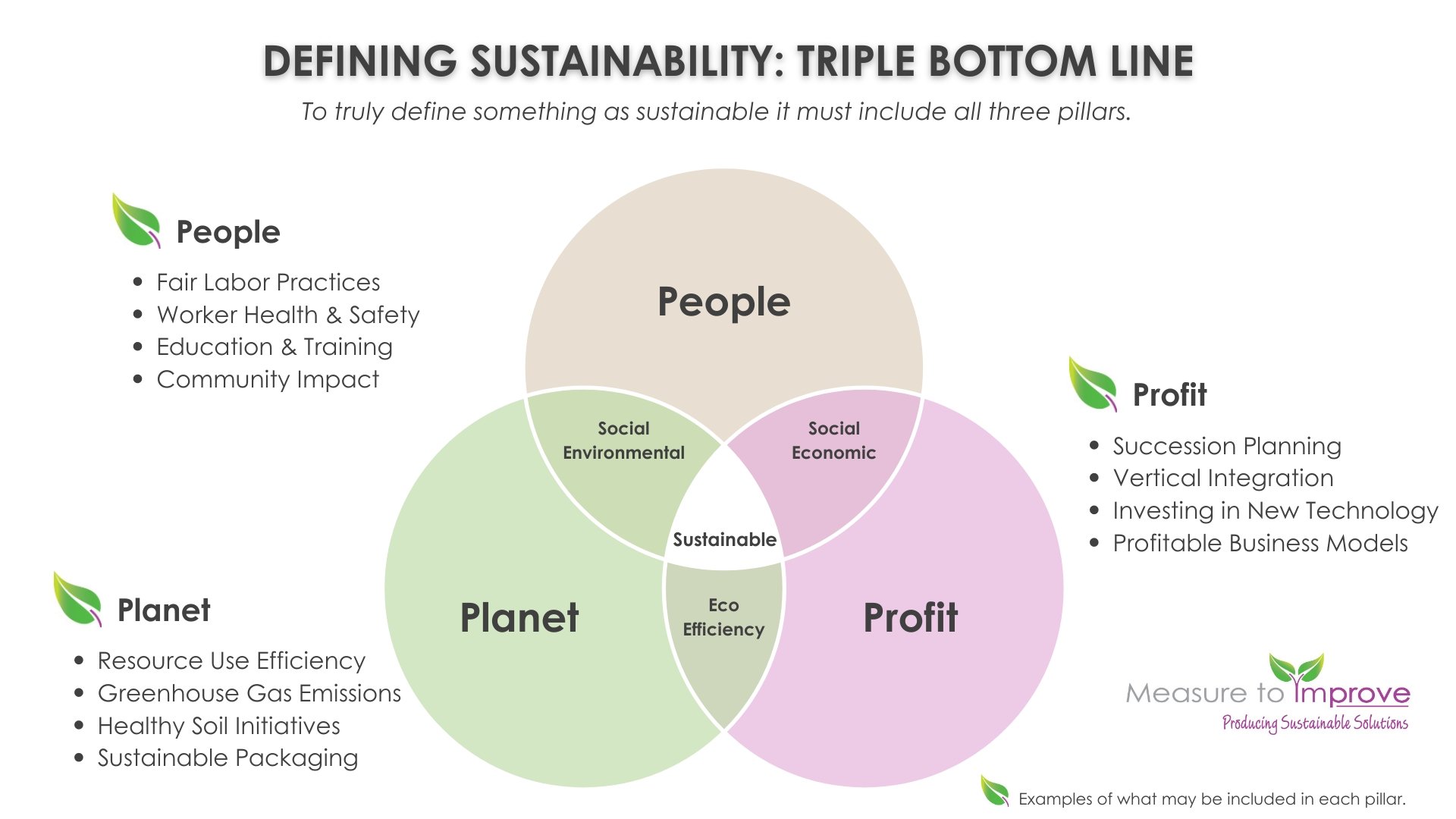Sustainability: You're Already Doing It
Although sustainability has become crucial and a top priority for the fresh produce industry, it is still an often misunderstood concept. At its core, I define sustainability using the Triple Bottom Line, which emphasizes the integration of three key components: People (social responsibility), Planet (environmental stewardship), and Profit (economic viability).
Despite years of discussion, I still hear panelists, keynote speakers, and conference attendees say that "sustainability means different things to different people." This ambiguity can be confusing and even discouraging to someone who is just trying to get started with their sustainability initiatives or programs, but here is how I like to navigate it.
Understand Your Sustainability Journey
While a consistent definition of sustainability is important, it's more important to recognize that each organization's journey is unique. Think of sustainability as your organization's "green print," a personalized map of where you are now and where you want to go. No two companies will have the same path, priorities, or responses to sustainability surveys. The key is to define where you are today and set ambitious yet achievable goals for the future. This is something Measure to Improve (MTI) can help with – our Sustainability Strategy Planning Service helps clients identify, prioritize, and communicate their current sustainability efforts and target sustainability improvements that align with company values and have a strong business case.
Make Sustainability Approachable
Putting a definition around sustainability is foundational because it makes the concept approachable. When the industry understands sustainability, it becomes something everyone can grasp and see they are already part of. This realization - that "ah ha moment" - makes sustainability seem achievable. From there, it's about formalizing the starting point and focusing on what is most meaningful to your organization while meeting external requests for information.
My Journey to Understanding Sustainability
In 2007, when I returned to my family business, I was tasked with responding to customer (buyer) requests about our sustainability initiatives. At first, I struggled to understand what sustainability meant, let alone how to communicate and report on it. When it was brought up during one of my first strategic planning meetings, my dad's response - "I have no idea, go figure it out" - led me on a mission to understand it more, to be able to prepare to respond to buyer requests.
I asked everyone inside and outside our organization what sustainability meant to them and received a wide range of answers:
"Sustainability is just some warm and fuzzy BS"
"I recycle, that means I am sustainable? "
"Sustainability means leaving things better for my kids than when I found them"
"I can’t be sustainable because I don’t farm Organically"
"I've been in business for over 30 years, so that makes me sustainable, right?"
My first attempt at looking up what sustainability meant I came across these two definitions:
1987 UN Brundtland Commission: Sustainable development is "development that meets the needs of the present without compromising the ability of future generations to meet their own needs."
1990 Farm Bill: Sustainable agriculture is "an integrated system of plant and animal production practices having a site-specific application that will, over the long term, satisfy human food and fiber needs; enhance environmental quality and the natural resources base upon which the agricultural economy."
Both these definitions are saying the same thing but slightly different they are wordy, lofty and not intuitive, at least not to me. I needed something more tangible and relatable.
The Triple Bottom Line
I eventually discovered the concept of the Triple Bottom Line, often referred to as the three P's or three E's: People, Planet, Profit or Social Equity, Environment, and Economics. To define something as sustainable, you must include all three:
People: The social component, including workers' rights and human rights.
Planet: The environmental component, covering waste, water, energy, climate, etc.
Profit: The economic component, focusing on financial viability and ROI.
A Practical Example of Defining Sustainability Using Zero Waste Programs
Consider a Zero Waste program, which illustrates the Triple Bottom Line:
People/Social Equity Pillar: Achieving zero waste requires training and education for employees. This empowers and educates them about zero waste, benefiting both the company and their personal lives and career goals.
Profit/Economic Pillar: Zero waste can save money. Recycling is often cheaper than landfill disposal, and source-separating materials like cardboard and metals can generate income if markets are available.
Planet/Environmental Pillar: Zero waste reduces material inputs and outputs and reflects an organization's responsibility for its environmental impact, benefiting both the organization and the community.
Why Do I Define Sustainability?
It’s important for Measure to Improve’s entire team to include a definition of sustainability in every speaking engagement and client introduction. Why? Because it’s important to ensure everyone is on the same page and we never assume someone understands. Understanding what sustainability means is foundational and without a true understanding it’s difficult to move forward, especially if everyone is on different pages. It's the starting point and for many it becomes the Ah Ha moment and a recognition that they are already doing things that fall under the sustainability umbrella.
The Produce Industry is Already Doing It
Defining sustainability in the produce industry is not just about understanding lofty definitions; it's about making it tangible and relatable. It's recognizing that the industry is already practicing and implementing a lot of things that fall under the sustainability umbrella. By defining and communicating all the work we are already doing in this industry, it becomes very apparent that we are not starting from scratch and actually have a solid foundation to stand on. Doing so makes sustainability approachable and achievable.
Sustainability is becoming the cost of doing business, similar to how food safety was once viewed. Starting with a clear definition is essential to make sustainability approachable and actionable for everyone.
Moving Forward
When you're ready to advance your sustainability efforts, Measure to Improve can help. Our team of experts will help you discover, evaluate, and formalize the Triple Bottom Line of Sustainability for your organization.



